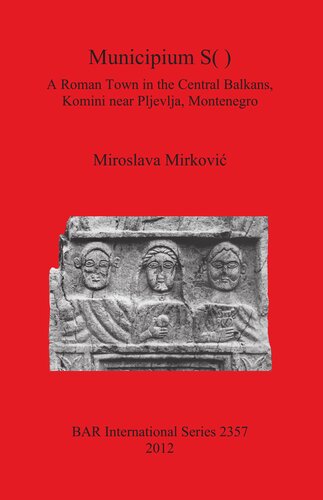

Most ebook files are in PDF format, so you can easily read them using various software such as Foxit Reader or directly on the Google Chrome browser.
Some ebook files are released by publishers in other formats such as .awz, .mobi, .epub, .fb2, etc. You may need to install specific software to read these formats on mobile/PC, such as Calibre.
Please read the tutorial at this link: https://ebookbell.com/faq
We offer FREE conversion to the popular formats you request; however, this may take some time. Therefore, right after payment, please email us, and we will try to provide the service as quickly as possible.
For some exceptional file formats or broken links (if any), please refrain from opening any disputes. Instead, email us first, and we will try to assist within a maximum of 6 hours.
EbookBell Team

4.4
22 reviewsExcavations at Komini near Pljevlja and at Kolovrat near Prijepolje were conducted from 1964-1967, and again in 1970-1977. Two Roman-city cemeteries were discovered and nearly 700 graves, many of them with inscribed monuments. These excavations represent the significant finds of a Roman municipium at Komini, near present-day Pljevlja, which sprang up in the central Balkan area far from the main Roman communications network. The settlement grew in Roman times in the valley through which the small Ćehotina river flows, a tributary of the river Lim. The municipium was situated in a plain enclosed by high mountains, not far from another big Roman settlement in present-day Kolovrat near Prijepolje. The Roman city existed, as the findings from the excavated cemeteries prove, for no longer than three and a half centuries, from the 1st to the 4th centuries AD. There is no doubt that the settlement was granted municipal status. Citizens holding municipal offices appear in the inscriptions, but the actual name of the municipium has not yet surfaced – either in inscriptions or in literary evidence. It is believed that the abbreviation 'S' in one inscription refers to the name of the municipium, although this is not proved by any other inscription. The author, in this new study of the site, has adopted the toponym 'Municipium S.', focussing on the collection, commentary, and re-publication of all the inscriptions from this location in the hope of presenting a reconstruction of the life of the city, from the 1st to the 4th centuries AD, basing his research on the literary, archaeological and epigraphical evidence.